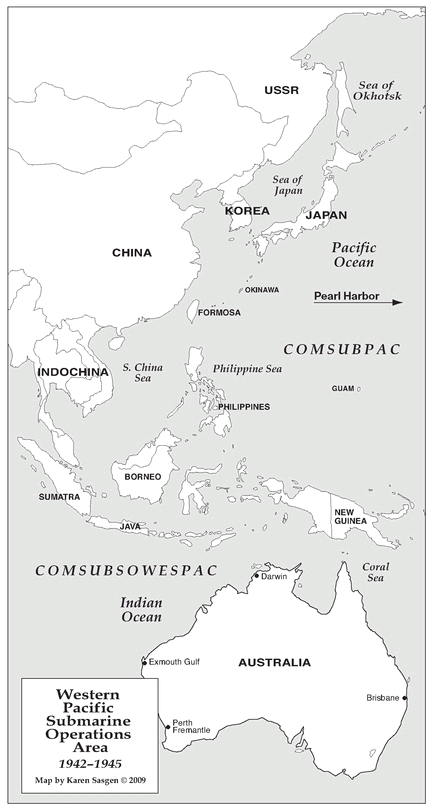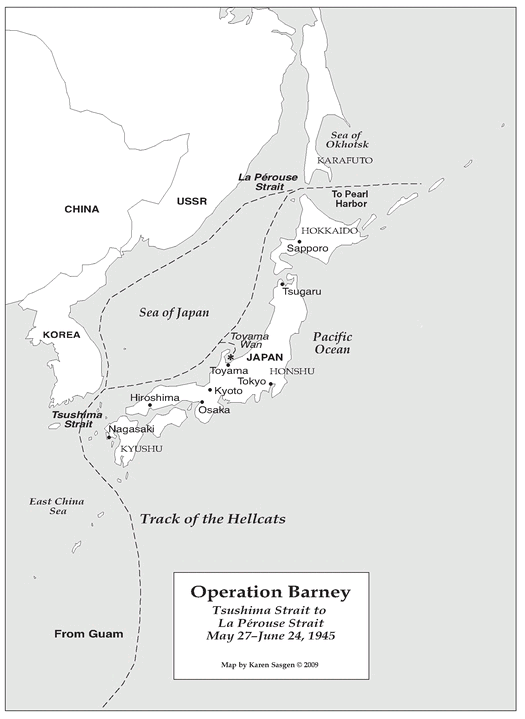Hellcats
Authors: Peter Sasgen


Table of Contents
Â
Â
Â
Â
Â
Other Books by Peter Sasgen
Â
Stalking the Red Bear: The True Story of a U.S. Cold War Submarine's Covert Operations Against the Soviet Union
Â
Red Scorpion: The War Patrols of the USS Rasher
Â
War Plan Red (novel)
Â
Red Shark (novel)

NAL CALIBER
Published by New American Library, a division of
Penguin Group (USA) Inc., 375 Hudson Street,
New York, New York 10014, USA
Penguin Group (Canada), 90 Eglinton Avenue East, Suite 700, Toronto,
Ontario M4P 2Y3, Canada (a division of Pearson Penguin Canada Inc.)
Penguin Books Ltd., 80 Strand, London WC2R 0RL, England
Penguin Ireland, 25 St. Stephen's Green, Dublin 2,
Ireland (a division of Penguin Books Ltd.)
Penguin Group (Australia), 250 Camberwell Road, Camberwell, Victoria 3124,
Australia (a division of Pearson Australia Group Pty. Ltd.)
Penguin Books India Pvt. Ltd., 11 Community Centre, Panchsheel Park,
New Delhi - 110 017, India
Penguin Group (NZ), 67 Apollo Drive, Rosedale, North Shore 0632,
New Zealand (a division of Pearson New Zealand Ltd.)
Penguin Books (South Africa) (Pty.) Ltd., 24 Sturdee Avenue,
Rosebank, Johannesburg 2196, South Africa
Published by New American Library, a division of
Penguin Group (USA) Inc., 375 Hudson Street,
New York, New York 10014, USA
Penguin Group (Canada), 90 Eglinton Avenue East, Suite 700, Toronto,
Ontario M4P 2Y3, Canada (a division of Pearson Penguin Canada Inc.)
Penguin Books Ltd., 80 Strand, London WC2R 0RL, England
Penguin Ireland, 25 St. Stephen's Green, Dublin 2,
Ireland (a division of Penguin Books Ltd.)
Penguin Group (Australia), 250 Camberwell Road, Camberwell, Victoria 3124,
Australia (a division of Pearson Australia Group Pty. Ltd.)
Penguin Books India Pvt. Ltd., 11 Community Centre, Panchsheel Park,
New Delhi - 110 017, India
Penguin Group (NZ), 67 Apollo Drive, Rosedale, North Shore 0632,
New Zealand (a division of Pearson New Zealand Ltd.)
Penguin Books (South Africa) (Pty.) Ltd., 24 Sturdee Avenue,
Rosebank, Johannesburg 2196, South Africa
Â
Penguin Books Ltd., Registered Offices:
80 Strand, London WC2R 0RL, England
80 Strand, London WC2R 0RL, England
Â
First published by NAL Caliber, an imprint of New American Library,
a division of Penguin Group (USA) Inc.
a division of Penguin Group (USA) Inc.
Â
First Printing, November 2010
Â
Copyright © Peter Sasgen, 2010Maps by Karen Sasgen
All rights reserved
All rights reserved
Â
NAL CALIBER and the “C” logo are trademarks of Penguin Group (USA) Inc.
Â
LIBRARY OF CONGRESS CATALOGING-IN-PUBLICATION DATA:
Sasgen, Peter T., 1941-
Hellcats: the epic story of World War II's most daring submarine raid/Peter Sasgen.
p. cm.
Includes bibliographical references and index.
eISBN : 978-1-101-47503-4
1. World war, 1939-1945âNaval operationsâSubmarine. 2. World War, 1939-1945âNaval operations, American. 3. World War, 1939-1945âCampaignsâJapan, Sea of. 4. Operation Barney, 1945. 5. Lockwood, Charles A., 1890-1967. 6. SonarâHistoryâ20th century. I. Title.
D783.S37 2010
940.54'25âdc22
2010028766
Â
Â
Â
Without limiting the rights under copyright reserved above, no part of this publication may be reproduced, stored in or introduced into a retrieval system, or transmitted, in any form, or by any means (electronic, mechanical, photocopying, recording, or otherwise), without the prior written permission of both the copyright owner and the above publisher of this book.
Â
PUBLISHER'S NOTE
While the author has made every effort to provide accurate telephone numbers and Internet addresses at the time of publication, neither the publisher nor the author assumes any responsibility for errors, or for changes that occur after publication. Further, publisher does not have any control over and does not assume any responsibility for author or third-party Web sites or their content.
Â
The scanning, uploading, and distribution of this book via the Internet or via any other means without the permission of the publisher is illegal and punishable by law. Please purchase only authorized electronic editions, and do not participate in or encourage electronic piracy of copyrighted materials. Your support of the author's rights is appreciated.
To the men and the families
of the USS
Bonefish
(SS-223)
of the USS
Bonefish
(SS-223)
The Americans had not ... made any great sacrifices of blood. They would certainly not withstand a great trial by fire, for their fighting qualities were low. In general, no such thing as an American people existed as a unit; they were nothing but a mass of immigrants from many nations and races.
âAdolf Hitler, from
Inside the Third Reich
by Albert Speer
Inside the Third Reich
by Albert Speer
Â
Â
To our good and loyal subjects ... We declared war on America and Britain out of our sincere desire to ensure Japan's self-preservation and the stabilization of East Asia, it being far from our thought either to infringe upon the sovereignty of other nations or to embark upon territorial aggrandizement. Despite [this] the war situation has developed not necessarily to Japan's advantage.âExcerpt from Emperor Hirohito's surrender address to the Japanese people, August 15, 1945
Â
Â
It is to the everlasting honor and glory of our submarine personnel that they never failed us in our days of great peril.âChester W. Nimitz, Fleet Admiral, United States Navy


PREFACE
M
ay 27, 1945. Diesel engines rumbling impatiently, a task force of submarines lay moored in Apra Harbor, Guam. Fueled, provisioned, torpedoes loaded, the subs and their crews were ready to sail. As the late-afternoon hour for their departure approached, submarine force commander Vice Admiral Charles A. Lockwood and his staff gathered to see the subs off on their mission.
ay 27, 1945. Diesel engines rumbling impatiently, a task force of submarines lay moored in Apra Harbor, Guam. Fueled, provisioned, torpedoes loaded, the subs and their crews were ready to sail. As the late-afternoon hour for their departure approached, submarine force commander Vice Admiral Charles A. Lockwood and his staff gathered to see the subs off on their mission.
With great anticipation and excitement, they watched the subs, their diesels rolling to a deep thrumming pitch, cast off lines and clear their moorings. As the task force formed up and moved slowly toward the open sea, Lockwood returned departing salutes and waved good-bye.
Earlier, Lockwood had thought to say something beyond the rote custom of “good luck” and “good hunting,” something that the submariners could draw strength from in difficult moments. But he had seen the steady burn of self-confidence in the faces of the departing skippers and knew that the time for speeches was over. The mission was in their hands now. And in their hands it would either succeed or fail; there would be no middle ground.
Lockwood felt an all too familiar pang of apprehension. There were so many unknowns. So many factors beyond the submariners' control. Anything could go wrong. For one, the enemy was unpredictable. For another, the secret sonar device aboard those subs, which had made the mission possible and on which so much was riding for its success, was neither perfect nor foolproof.
Lockwood had never felt more alone than he did at that moment. Yet, at the same time he felt more connected than ever to the almost eight hundred men departing on what might prove to be a doomed mission. Two years had passed since the loss of the storied submarine
Wahoo
and her gallant crew, which had inspired the mission. During that time more submarines had been lost and Lockwood feared that the mission on which he was sending the task force would result in further losses. A picture formed in his mind, one that had haunted him day and night since the war began: a submarine, destroyed by depth charges, plunging into a black void.
Wahoo
and her gallant crew, which had inspired the mission. During that time more submarines had been lost and Lockwood feared that the mission on which he was sending the task force would result in further losses. A picture formed in his mind, one that had haunted him day and night since the war began: a submarine, destroyed by depth charges, plunging into a black void.
Not everyone in the submarine force shared Lockwood's ironbound confidence in the secret electronic weapon aboard those subs, nor his unshakable belief that the mission, if it succeeded, would help end the war. Officers whose judgment he respected had told him that it was a suicide mission. But there were others, especially the scientists who had worked like demons to perfect the secret weapon, who believed it would work and that the mission would succeed. It was, Lockwood reflected, too late to alter plans or have second thoughts.
As the submarines slowly threaded their way out of the harbor to disappear from view into the shimmering Pacific Ocean, Lockwood could only wait for the first reports from the sea to the north where those subs and the ones to follow would fight one of the most daringâand dangerousâsubmarine battles of World War II.
Other books
Chorus Skating by Alan Dean Foster
Cruel : Stepbrother Billionaire Romance by Payne, K C
Gravity by Amanda Miga
Heart of the City by Ariel Sabar
Ellen in Pieces by Caroline Adderson
Cuentos completos by Isaac Asimov
Quid Pro Quo by L.A. Witt
Adventures of a Salsa Goddess by Hornak, JoAnn
Blood Leverage (Bloodstone Chronicles Book 1) by J S Hazzard
Epitaph by Mary Doria Russell